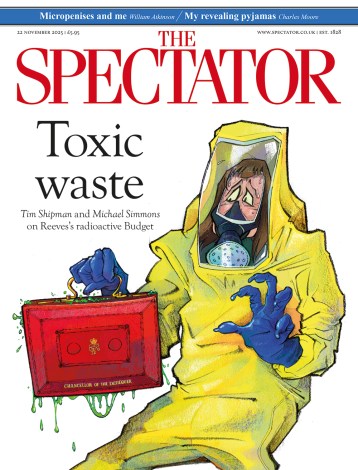My colleague seemed surprised that I replied ‘no’ when asked if I was sad at the news that G-A-Y bar – a staple of Soho for decades – was closing. A more intelligent answer would be that the closure of any ‘gay space’ is sad, but the truth is this is not somewhere that many in ‘the community’ will mourn.
I tried to think about the last time I went to G-A-Y and I can’t remember. I texted a dozen friends and they can’t remember either. I guess that speaks to part of the problem. Jeremy Joseph, the owner of the bar, announced the closure on social media on Wednesday. But the speed of its closure this weekend, just days after the announcement, is surprising.
Joseph says that ‘Old Compton Street has lost [its] LGBT identity’. It’s true that G-A-Y used to have queues; nowadays they’re usually for Korean restaurants or pop-up trainer shops. A common refrain among London gays is that Soho is becoming ‘less gay’. ‘It’s become respectable and polished now. It’s fun and flashy – but in a theme park, family kind of way,’ a friend told me.
I wonder why Soho has changed. Perhaps as London has no other defined ‘party area’ central Soho ends up absorbing visitors, diluting its ‘gayness’. As I walk down Old Compton Street, it certainly feels less gay than I remember, but then again other – and older – gay venues further down the street are bustling, like Comptons and the Admiral Duncan.
I think Joseph is right to diagnose the challenges to queer spaces, and to Soho, but in this instance it seems like a convenient excuse. G-A-Y had a reputation for unfriendly bouncers, and only three years ago it received a one-star hygiene rating.
As I was meant to be having a date night with my boyfriend anyway, I told him I’d decided we should head to G-A-Y instead – ‘for research’. The outside of the club gave some clue to its demise. It looked quiet and there were garish LED signs screaming at me. The music was confusing, from Sean Paul to Kate Bush; the décor felt dated; most people seemed to be lone visitors or groups of older women there for a laugh. I asked a few people how they felt about the closure, and found that most are tourists, unaware. It got busier as the night went on, but was never full. Half the crowd were in skinny jeans. There was a man in a flat cap and another in a denim jacket and GAA shorts. My boyfriend leant in, ‘everyone is too old or too young’.
Perhaps as London has no other defined ‘party area’ central Soho ends up absorbing visitors, diluting its ‘gayness’
G-A-Y has been on Old Compton Street for as long as I can remember, but I realised I don’t really know the history of the place. I defer to the gay elders. ‘I’m amazed it’s gone on so long,’ one told me. ‘I’ve known at least four London gay villages in my lifetime: Earls Court in the mid-1980s, Vauxhall at the millennium, Shoreditch a bit later.’ Soho was never exclusively homosexual, but it has always been considered bohemian, and it seems the gay venues proliferated in the late 1980s into the 1990s.
For many, G-A-Y was their first experience of a gay bar, and often it was a bar you’d drop in on the course of a long Soho crawl. Somewhere along the way it got left behind. It looked like the bar never left the late 2000s. The ‘cool’ gay nights out are now dissipated across London: Feel It, Roast, Adonis, LaLeche. The old-school gay pubs seem to be thriving in part because they’re unashamedly ‘uncool’. G-A-Y got stuck in between.
That isn’t to say there isn’t a challenge with London nightlife more generally. Mayor Sadiq Khan wants London to be a 24-hour city but 57 per cent of pubs and clubs in London are expected to close by 2030. Meanwhile, 61 per cent of LGBT bars have already closed in the past decade. Joseph has been vocal about his battles over rent increases for his venues and says that closing G-A-Y allows him to focus on Heaven, his nightclub, which is another staple of the gay scene, and which will celebrate its 50th anniversary in 2029.
The closure of G-A-Y offers a cautionary tale, but perhaps there is some hope for other venues. I asked the author Philip Hensher for his thoughts. He said that, order-in sex apps aside, ‘the innate urge of the gays to dress up, show off, point at the queen in last year’s Moschino, laugh, and parade up and down is always going to keep gay bars going – if they’re good gay bars’.








Comments